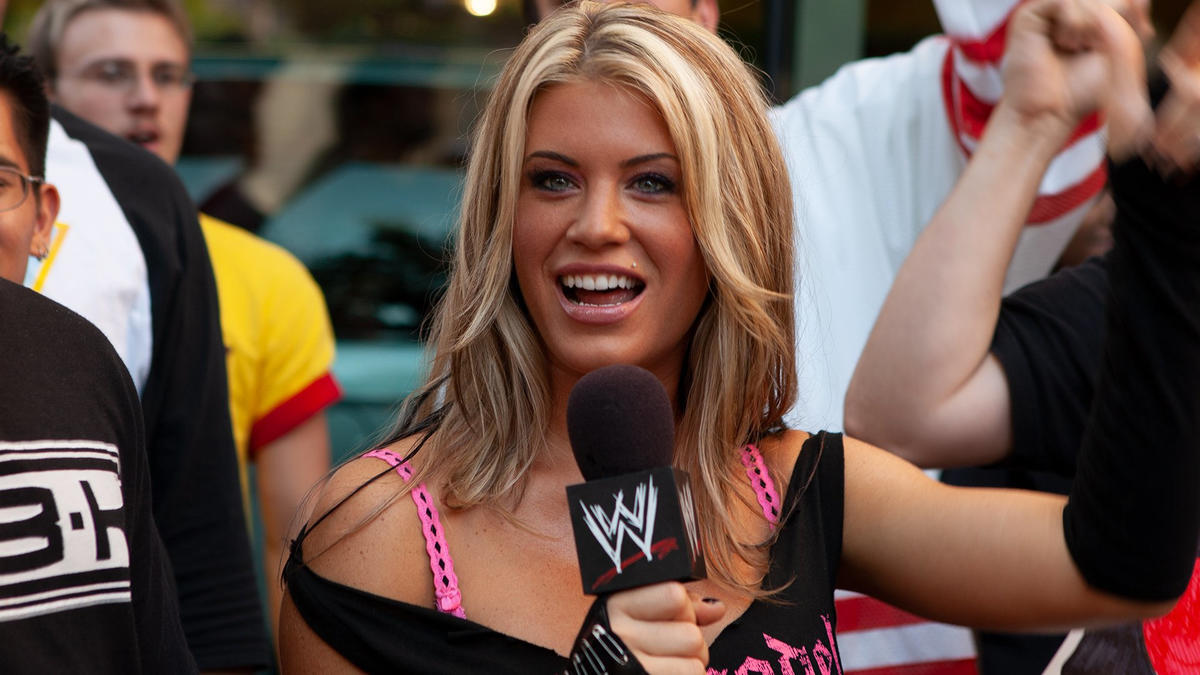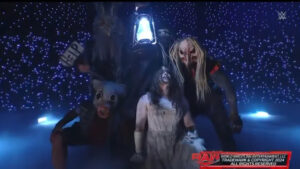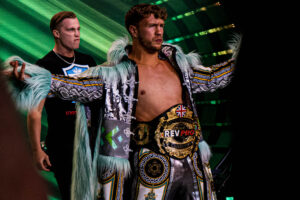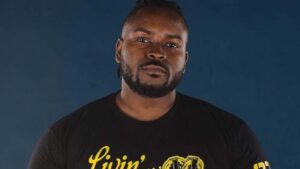My Introduction to the Divas
I got into wrestling as a teenager during the Ruthless Aggression Era, specifically Smackdown. My heroes were the technical grappling trio of Kurt Angle, Chris Benoit, and Eddie Guerrero. They were wrestlers who fought through pain and found a way to overcome the odds.
As for the women, the Divas as they were called then, honestly, my teenage self would have referred to them as window dressing. They existed it seemed to me, as a boy whose hormones were like magic bullets ricocheting through my body, as both a source of titillation and embarrassment. The latter especially if other family members were in the room.
The former if I was alone. In retrospect, it was a product of both my wider culture and the WWE’s treatment of women. Something I explored earlier this week in an article on divas and discrimination.
Even to this day, my girlfriend, who was exposed to WWE during the Attitude Era, jokes about keeping my hands where she can see them if there are female wrestlers on TV. It’s a joke, but it reminds me of being a teenager and my mum and sister teasing me for putting Divas posters on my wall. I quickly removed them out of shame.
The Divas were used as defenceless valets, objects for male wrestlers to pursue in sexual-driven storylines and/or bikini contests. Later, the bra and panties match. This in retrospect was by design.
I never took the women seriously. At first, I favoured Dawn Marie over Torrie Wilson by default. Like supporting one of two local football teams despite having no interest in football. Just out of obligation. Torie was the All-American girl, but I preferred brunettes over blondes. Any deeper emotional connection was halted as both were one-dimensional characters.
My Wrestling Crush
I watched Raw around 2005 when the Diva Search returned. I had missed the first one, so I had missed out on Christy Hemme sitting in a cream pie. Or the girls being encouraged to shoot and shame each other by discussing their sex lives. This year, one of the supermodel-like figures stood out for me. And ultimately everyone else.
Ashley was different. She stood out compared to the others in both look and personality. I was an “outsider”. Into rock, metal, and alternative things. Everything about her screamed at me. The backwards cap. The pink and black. The fishnet gloves. Heavy eyeliner. Lip piercing. She was a skater girl and gorgeous. And even better, unlike the others, she seemed to legitimately love wrestling.
In talent contest week, Ashley hit an actual wrestling move. Unlike the other “fake” girls who were there for fifteen minutes of fame, she did do a lap dance or spanking as her talent. She was my favourite. Of all the women, she seems the most authentic. She embodied the theme song by Audioslave “Be Yourself”.
The Inherent Misogyny
My language so far deliberately reflects what I remember about my teenage thought process. In hindsight and being a feminist, it is easy to recognise how what seemed like an innocent teenage crush and viewpoint of women reveals a lot about the misogyny that I had learned from my culture.
Misogyny is more than explicitly stating or having a hatred, prejudice, or dislike of women. At its roots, it’s about the separation of women and men not only as equals but even as human beings. It is a philosophy of “othering” where women fit into two camps with no middle ground. Women are either elevated in stature. Put on pedestals.
Described as goddesses, holy, superior to men and seem untouchable. Or degraded and presented as being lower than man, worthless.
On the one hand, aspects of my parasocial attraction towards Ashley Massaro were based on subtly misogynistic principles. She was more “real” compared to those other “fake” Divas. I’d elevated her and downgraded the others. I made her an idol, while likewise objectifying the other divas, who I deemed as interchangeable.
Based on what evidence? Beyond appearance and attitude, I knew nothing of these women. But then WWE never presented them as fully-fledged individuals, let alone characters.
Ashley Massaro took part in bikini contests, bra and panties or pillow fight matches. Ashley posed for Playboy. Her sexuality was displayed. Like other female wrestlers of the time, when a male wrestler was involved, Ashley too lost her autonomy.
Parasocial Positives
Discussions of parasocial relationships in wrestling are usually negative. It also plays into the stereotype of the fan who believes they know the person who plays the wrestler, the character on TV. And some fans will speak or write as if they know exactly what the wrestler thinks and feels. Like they are on speaking terms with that wrestler, or like they are their agent.
This is at its worst and is present in our fandom. Yet it exists in other sports and entertainment pursuits. Someone who shouts at the TV during a football game because the player didn’t do what they wanted, that’s parasocial. Someone who views a sports coach as moronic because they know better how to run the team, that’s parasocial.
Yet these connections, in adolescence and adulthood help individuals find their identity. They can help those with low self-esteem become closer to their idealized self. It can help with empathy and togetherness and can give a safe place for people to question beliefs and assumptions.
These connections can help us learn more about other people and groups we may not encounter on a day-to-day basis. Studies have shown parasocial relationships can have extremely positive effects on the way we view ourselves, others, and the world around us.
Realisations
With Ashley being presented with a similar character to the other divas, it helped me to see each woman more as an individuals rather than an interchangeable group. When Ashley Massaro was introduced to Raw and was taunted and attacked by Torrie Wilson and Candice Michelle, the group that would later become Vince’s Devils, I noticed something significant about the characters the Divas played.
Torrie Wilson, who had always been a face before. Now she acted, almost interchangeably in the same way Dawn Marie and other villainous divas like Sable had on Smackdown. She was treating other women the same way with the same cruelty they had treated her within the storyline.
I questioned why they have to be similar. I became aware of the restrictions and constraints put on female wrestlers.
Elsewhere, in a segment where Ashley knocked Vince McMahon’s coffee over his shirt, it exemplified to me something that WWE’s over-the-top nature made a wider trend in other media of the time clear. Women were often overtly sexualised and presented as powerless around men. This segment journalist Isobel Thompson described as “budget porno”.
Thompson’s Audible podcast Ashley vs. WWE helped me remember Ashley Massaro’s role in my fandom. It also helped me realise how unconsciously I became aware at that age of how diminished and pigeon-holed divas in WWE were during this time.
Growing Respect
Over time, as I smartened up to the politics and the behind-the-scenes antics of WWE, I questioned other aspects of how the divas were treated. First, when I learned that WWE moved to a hiring policy of hiring models rather than trained wrestlers. The reasoning was obvious, but I did not hate these women or the way they came into wrestling.
Ashley Massaro had come into the wrestling business the same way and showed love, passion, and respect for the business. As did others like Trish Stratus before her. Like Trish, Ashley worked hard to get better in the ring. Although online some referred to her as “Trashley”, there was something about her that suggested she cared and wanted to do her best.
When I learned through the Ashley vs. WWE podcast that Massaro had tried to get additional training beyond WWE, it only reminded me of that feeling. Whether it was real or just a parasocial projection, I gave the divas a chance.
The disparity in in-ring skills allowed me to recognise the talents of others. Trish, Lita, Victoria, Jazz and Gail Kim. Then later divas like Michelle McCool wanted to be taken seriously as wrestlers. I found divas for the women rather than just empathy. That started with Ashley.
Give Divas a Chance
My growing admiration for the women’s division and the contrast between how they and the men were treated moved me to frustration and anger. I remember being angry after Lita’s retirement at Survivor Series 2006. My memory of Cryme Tyme throwing Lita’s underwear into the crowd was one of many moments of creative dissatisfaction that pushed me away from WWE. It was humiliating and undermined everything she had accomplished in the ring.
Yes, Vince did this with other wrestlers, primarily male, including himself. However, given the time and actual real-life hatred that Lita faced due to her relationship with Edge, it only reinforced a negative stereotype of one of the women’s division’s greatest wrestlers.
I remember the revival of ECW and a segment of “extreme strip poker”. The likelihood of nudity I knew was low, but again, I wondered when, if ever, the women would be given a chance in the ring.
When they did wrestle, their matches were termed “popcorn/toilet matches”. WWE made it clear and simple to fans these short matches were supposed to be rest breaks. Palate cleansers before returning to the real action.
When TNA began airing in the UK, I switched allegiances partly because of The Knockouts. Before then just taking a break from wrestling for a few years.
Progress is slow but eventually, things changed with the Give Divas hashtag. WWE, as they do, seemed to present it as a McMahon idea with Stephanie McMahon being placed at the forefront. Things changed. Slowly, they have changed.
The Legacy of Ashley Massaro
After Ashley’s suicide and the allegations that have since come out about her experiences in WWE (a full breakdown can be found here), her legacy should be more than an alleged victim of sexual assault as well as more than a diva.
As a woman’s wrestler, she got to live her dream but still faced prejudice from fans and even her friends and family, who at times shunned her due to the “raunchiness” of the WWE product. Despite that, she got to be a version of herself and got to stand out as someone different to the rest of the WWE Divas of the time.
When recently a one-sided argument with Cora Jade suggesting that Skye Blue copied her style, including wearing a backwards baseball cap, some replies pointed to Nikki Bella as the originator of the look. Few seemed to recognize Ashley Massaro did it before all of them.
Yet also, Ashley’s blending of the punk aesthetic with femininity is something that can also in many female wrestler’s attire and presentation in subsequent years. Along with Lita, both represented the alternative in WWE and wrestling.
When I listened to the Ashley vs. WWE podcast, I could not help but recognize that despite the issues Ashley Massaro faced, she was an incredible person both before, during and after her time in the ring. Former WWE wrestler and friend, Melina, said Ashley was “strong-willed inside and outside.”
Ashley Massaro was a woman. A mother. If not for her, I and perhaps other fans may not have recognized inequalities in how wrestling and our culture more widely dehumanize women. She was a human being and helped me to think about how all people deserve equity.
More From LWOS Pro Wrestling
Header photo – WWE – Stay tuned to the Last Word on Pro Wrestling for more on this and other stories from around the world of wrestling, as they develop. You can always count on LWOPW to be on top of the major news in the wrestling world, as well as to provide you with analysis, previews, videos, interviews, and editorials on the wrestling world.






